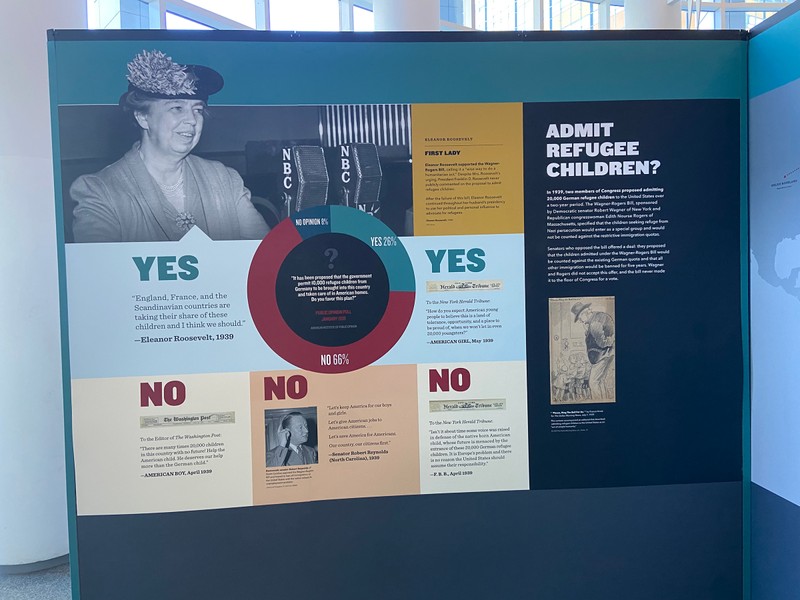Admit Refugee Children
Introduction
Author-Uploaded Audio
Admit Refugee Children (Americans and the Holocaust)
Text-to-speech Audio
Right after the Kristallnacht attacks, a Democratic senator and a Republican congresswoman introduced legislation to permit 20,000 German refugee children under the age of 14 to immigrate to the United States, in addition to the people admitted within the immigration quotas. Eleanor Roosevelt, the First Lady, supported the bill, but many other Americans--both Democrats and Republicans--disagreed and opposed allowing in child refugees. You can see here that Senator Robert Reynolds, one of the loudest voices opposing the bill, was from President Roosevelt’s own Democratic party. You can see some of the statements and letters to the editor supporting and opposing the bill. Can one of you read one of the “Yes” arguments to us? And one of the “No” arguments? Take a look at the public opinion poll - what percentage of Americans opposed this bill? Right. Because of the strong opposition, the bill never made it to the floor of Congress for a vote.
Images
Admit Refugee Children panel (Americans and the Holocaust)

Backstory and Context
Text-to-speech Audio
Metropolitan Library System is one of 50 U.S. libraries selected to host AMERICANS AND THE HOLOCAUST, a traveling exhibition from the U.S. Holocaust Memorial Museum that examines the motives, pressures, and fears that shaped Americans’ responses to Nazism, war, and genocide in Europe during the 1930s and 1940s.
The Americans and the Holocaust exhibit will be on display at the Downtown Library, along with a series of related special events from Thursday, January 5 to Sunday, February 12.
Based on extensive new research of that period, Americans and the Holocaust addresses important themes in American history, exploring the many factors — including the Great Depression, isolationism, xenophobia, racism, and antisemitism — that influenced decisions made by the U.S. government, the news media, organizations and individuals as they responded to Nazism. This exhibition will challenge the commonly held assumptions that Americans knew little and did nothing about the Nazi persecution and murder of Jews as the Holocaust unfolded.
Drawing on a remarkable collection of primary sources from the 1930s and ’40s, the exhibition focuses on the stories of individuals and groups of Americans who took action in response to Nazism. It will challenge visitors to consider the responsibilities and obstacles faced by individuals — from Franklin Delano Roosevelt to ordinary Americans — who made difficult choices, sought to effect change, and, in a few cases, took significant risks to help victims of Nazism even as rescue never became a government priority.
Americans and the Holocaust was made possible by the generous support of lead sponsor Jeannie & Jonathan Lavine. Additional major funding was provided by the Bildners — Joan & Allen z”l, Elisa Spungen & Rob, Nancy & Jim; and Jane and Daniel Och. The Museum's exhibitions are also supported by the Lester Robbins and Sheila Johnson Robbins Traveling and Special Exhibitions Fund, established in 1990.
Sources
United States Holocaust Memorial Museum. Accessed January 5th, 2023. https://www.ushmm.org/.
American Library Association. Accessed January 5th, 2023. https://www.ala.org/.
